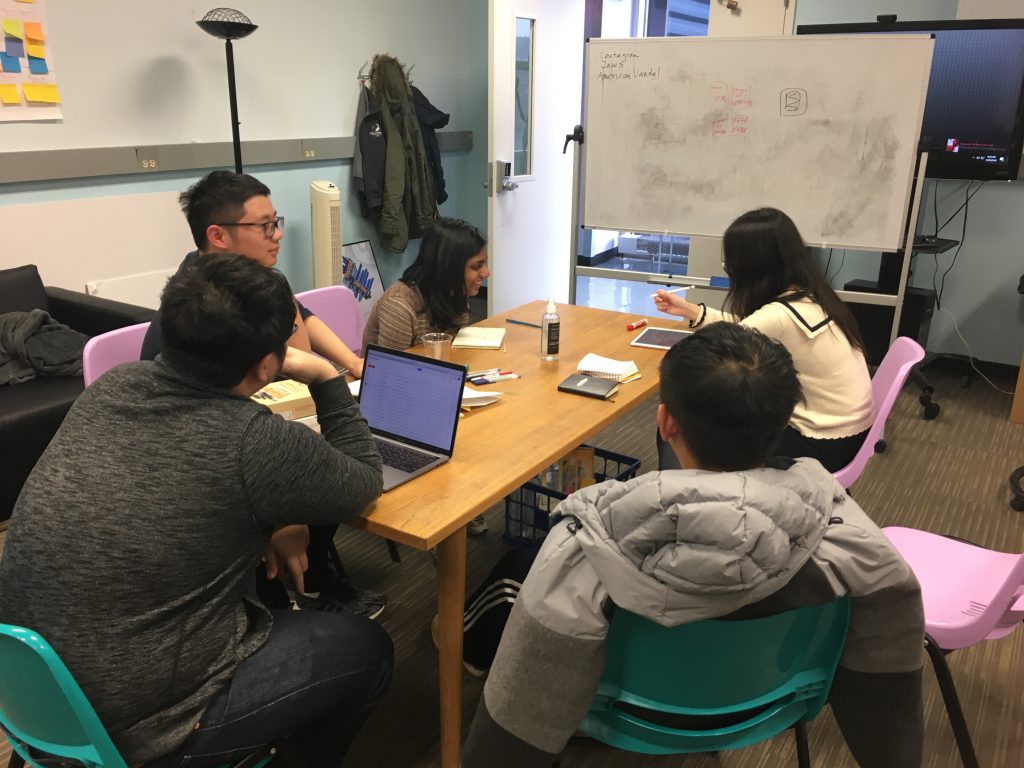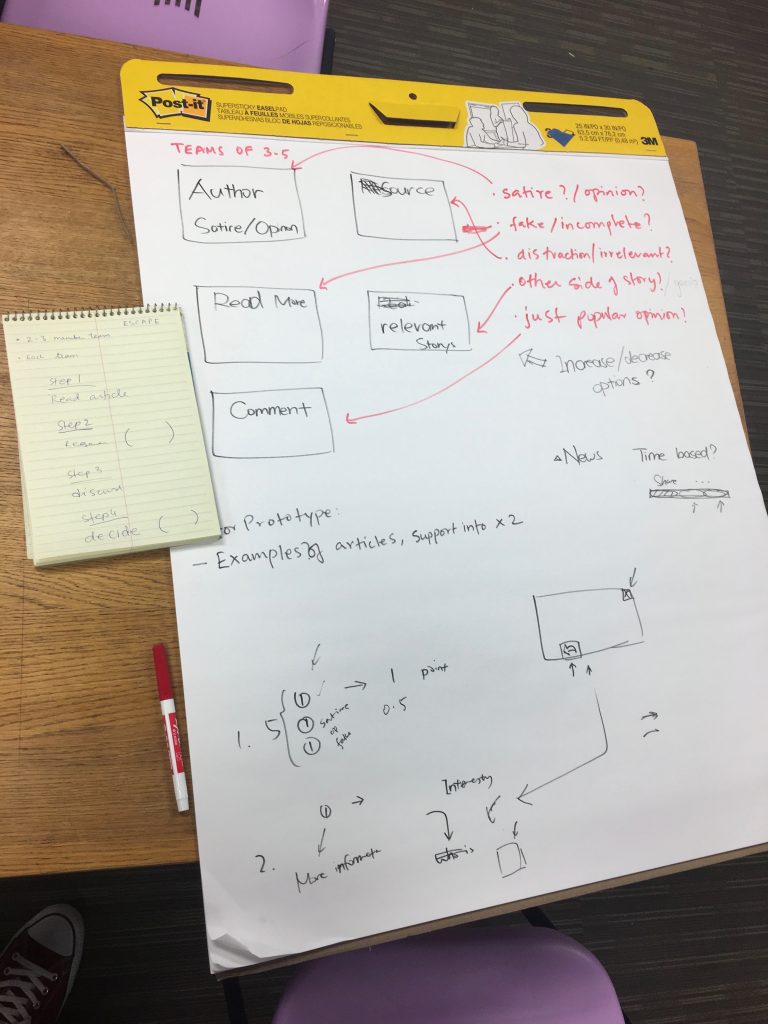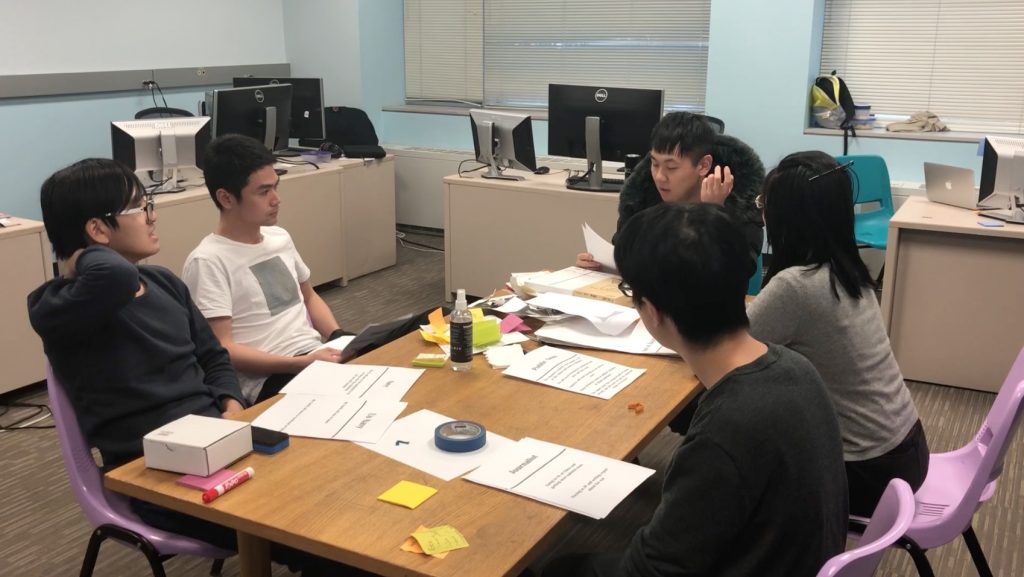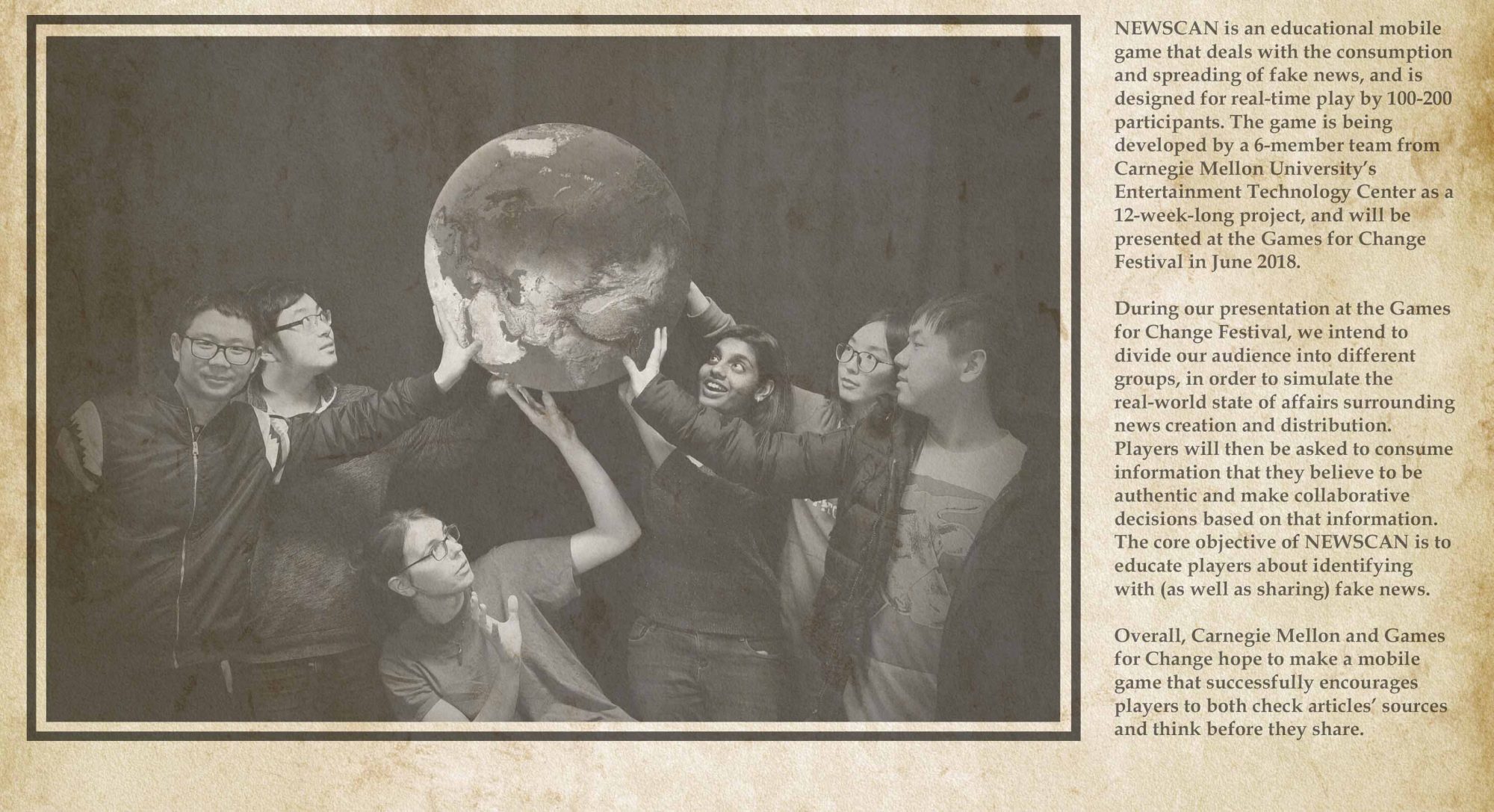Upon meeting with our faculty advisors, we were able to get some useful feedback on the concepts we had developed during the previous week. This feedback consisted of suggestions and comments concerning all three major ideas that we pitched to them, as well as some general notes for us to keep in mind going forward.
Story-driven WWII experience idea
- How will people access the game?
- How will the team facilitate that process?
Snap judgement news sharing game idea
- Could check out “theSkimm” for inspiration.
- Once the articles players have shared are displayed on the screen at the front of the room, they could begin to sort themselves based on source.
- This game could be set either in the past or in the future.
Detective game idea
- This is an excellent idea!
- Could start out with choices that have to do with individuals, but could progress to having players make decisions that require community input (such as the decision to impose a quarantine).
- Be careful about the amount of work players have to do in order to play your game.
- If players are allowed to dive in too far (in terms of layers of information), they might get lost.
Overall advice
- Players need to act on the information they acquire in some way; it’s not enough for them to just receive it.
- Consider your audience’s bias.
- Look at Games for Change’s transformational framework.
- Could combine the three ideas that we’ve presented in a number of ways.
One idea our advisors brought up that particularly struck us was the possibility of setting one of our game concepts within the context of a pandemic, as this would be a good way to both give our game clear, high stakes and ensure that the game remains (for the most part) devoid of political slants.
After this meeting, we used the elemental tetrad to break down the three ideas we had pitched to our advisors into some of their most basic components. Then, we fit those components together in various combinations until we came up with two concepts that we would develop further into rough design docs.

The two game concepts that we ended up choosing to flesh out in this manner were as follows:
- A visual novel-like experience set in WWII
- A detective game in which players can examine articles by clicking on hyperlinks and “zooming in” to create more research opportunities.
We then decided to take a page from the book of rapid prototyping and split our design doc work in half: three members of our team would work on writing a rough design doc for our WWII idea (with the additional goal of having a paper prototype ready for play-testing by Wednesday afternoon), and the other three would work on doing the same for the detective game idea.

As the week progressed, both sub-teams clarified the concepts they were fleshing out: we decided on a more specific setting for our WWII experience (i.e. Japan during the country’s invasion of Manchuria), and we decided to meld our detective game with a pandemic-related story.
However, after receiving feedback from additional ETC faculty members, we hit a little bit of a creative snag: all this time, we had been assuming that we needed to make a game that involved guests specifically consuming and/or sharing articles, but we had not considered the possibility of creating an experience that leaned more towards the metaphorical.
This revelation stumped us for a bit; we attempted to backtrack and brainstorm, but to no obvious avail. Fortunately, this brief detour didn’t set us back by too much; we were still able to create the rough design docs we had originally set out to write, and we were still able to play-test the first round of our WWII experience.

We wrapped up the week by holding another couple of meetings with both our faculty advisors and our client. While our faculty advisors were fairly satisfied with both of the ideas we had developed further, they pointed out that we needed to do more work in terms of establishing exactly what players will do during each stage of both our experiences (e.g. what players will do when they enter the room, what the process for splitting them up into groups will be like, et cetera). On the client side of things, we were urged to consider new mechanics that do not focus so heavily on the ideas of reading news and making story-advancing decisions based on that news (for instance, one option would be to explore letting players write their own headlines and share them).
Taking all of this into account, we will mainly spend next week creating two flowcharts based on the rough design docs we’ve already constructed, which will detail how the two experiences described within those docs will unfold, step by step. We also plan on generating an entirely new third game concept (which we can hopefully use to explore some of the suggestions our client posed to us), as well as getting in contact with both Dave and Sabrina Culyba to see if we can get some additional advice on where to take our project next.

